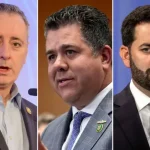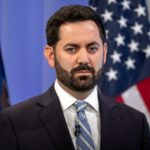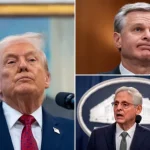
The Wall Street says it has gotten its hands on a secretive document revealing the details of a failed Ukraine-Russia peace deal that was on the table within the opening months of the war. Since then there have been several reports, including from Foreign Affairs which said the UK at the time sought to sabotage the deal.
The draft peace treaty was drawn up by negotiators from both sides in April 2022, and reveals the thinking and objectives of Moscow at the time. The 17-page document has never been made public, with the WSJ for the first time on Friday divulging key sections and points.
Dated April 15, 2022, the document is said to lay out an agreement that turns Ukraine into a "permanently neutral state that doesn’t participate in military blocs". It further stipulated that Ukraine must not build up its military using Western support and that Crimea must remain under Russian control.

The WSJ analysis admits that there were some deep concessions on the table from the Ukraine side, and further underscores many of these things would likely remain in place in any future deal where Ukraine would no doubt be inflicted with even more compromises given its forces are currently being rolled back by superior Russian military might.
"The draft treaty states that Ukraine, while being allowed to pursue European Union membership, wouldn’t be allowed to join military alliances such as the North Atlantic Treaty Organization," according to the report. "No foreign weapons would be allowed on Ukrainian soil."
And importantly, "Ukraine’s military would be pared down to a specific size." The proposed deal even sought to impose permanent limitations on the Ukraine armed forces' troop numbers: "Russia sought to limit everything from the number of troops and tanks to the maximum firing range of Ukrainian missiles."
Another key point dealt with the role of the Russian language in Ukrainian society. Some two-thirds of the country at least knows Russian, while much of the eastern portion that includes the Donbas speaks Russian as their first language. The document reportedly sought to ensure the Russian language had an equal status in Ukrainian government ministries and in courts. The Zelensky government has since the war's start sought to aggressively limit and even stamp out Russian in the public sphere.
According to more context of the draft deal from the WSJ:
The future of the area of eastern Ukraine covertly invaded and occupied by Russia in 2014, wasn’t included in the draft, leaving it up to Putin and Zelensky to complete in face-to-face talks. That meeting never took place.
The treaty was to be guaranteed by foreign powers, which are listed on the document as including the U.S., U.K, China, France and Russia. Those countries would be given the responsibility to defend Ukraine’s neutrality if the treaty were violated. But while the treaty held, guarantors would be required to “terminate international treaties and agreements incompatible with the permanent neutrality of Ukraine” including any promises of bilateral military aid. The international security guarantees wouldn’t apply to Crimea and Sevastopol.
Negotiations stopped completely by June of that year, and there were widespread reports months after indicating that UK Prime Minister Boris Johnson encouraged Zelensky not to make a deal with Moscow.
Meanwhile, entering the third year of this horrific and tragic conflict which has taken countless lives:
"Ukraine will join NATO. It is not a question of if, but when," Jens Stoltenberg, secretary general of NATO, said. pic.twitter.com/WLbyNS8TL3
— DW News (@dwnews) February 24, 2024
Hundreds of billions in arms and funding have since been poured into Kiev and its war effort, and tragically likely hundreds of thousands have died. So much death and destruction could have been averted if an early deal had been reached and held, and backed by external powers.
The WSJ gives specifics on troop limitations from the 17-page document in the following:
The draft treaty with Ukraine included banning foreign weapons, “including missile weapons of any type, armed forces and formations.” Moscow wanted Ukraine’s armed forces capped at 85,000 troops, 342 tanks and 519 artillery pieces. Ukrainian negotiators wanted 250,000 troops, 800 tanks and 1,900 artillery pieces, according to the document. Russia wanted to have the range of Ukrainian missiles capped at 40 kilometers (about 25 miles).
But Ukraine is now likely in for more severe restrictions on any future Ukrainian state and military, should there ever be a negotiation for the end of the war reached (assuming Moscow and NATO don't stumble into direct war by then).
Bloomberg on Thursday issued a report predicting total collapse of the Ukrainian front lines by summer, as the headline suggests (Ukraine Sees Risk of Russia Breaking Through Defenses by Summer): "Ukrainian officials are concerned that Russian advances could gain significant momentum by the summer unless their allies can increase the supply of ammunition, according to a person familiar with their analysis," the report said. Will peace settlement talks begin at that point, or will the West intervene even more forcefully?
The Wall Street says it has gotten its hands on a secretive document revealing the details of a failed Ukraine-Russia peace deal that was on the table within the opening months of the war. Since then there have been several reports, including from Foreign Affairs which said the UK at the time sought to sabotage the deal.
The draft peace treaty was drawn up by negotiators from both sides in April 2022, and reveals the thinking and objectives of Moscow at the time. The 17-page document has never been made public, with the WSJ for the first time on Friday divulging key sections and points.
Dated April 15, 2022, the document is said to lay out an agreement that turns Ukraine into a “permanently neutral state that doesn’t participate in military blocs”. It further stipulated that Ukraine must not build up its military using Western support and that Crimea must remain under Russian control.

The WSJ analysis admits that there were some deep concessions on the table from the Ukraine side, and further underscores many of these things would likely remain in place in any future deal where Ukraine would no doubt be inflicted with even more compromises given its forces are currently being rolled back by superior Russian military might.
“The draft treaty states that Ukraine, while being allowed to pursue European Union membership, wouldn’t be allowed to join military alliances such as the North Atlantic Treaty Organization,” according to the report. “No foreign weapons would be allowed on Ukrainian soil.”
And importantly, “Ukraine’s military would be pared down to a specific size.” The proposed deal even sought to impose permanent limitations on the Ukraine armed forces’ troop numbers: “Russia sought to limit everything from the number of troops and tanks to the maximum firing range of Ukrainian missiles.”
Another key point dealt with the role of the Russian language in Ukrainian society. Some two-thirds of the country at least knows Russian, while much of the eastern portion that includes the Donbas speaks Russian as their first language. The document reportedly sought to ensure the Russian language had an equal status in Ukrainian government ministries and in courts. The Zelensky government has since the war’s start sought to aggressively limit and even stamp out Russian in the public sphere.
According to more context of the draft deal from the WSJ:
The future of the area of eastern Ukraine covertly invaded and occupied by Russia in 2014, wasn’t included in the draft, leaving it up to Putin and Zelensky to complete in face-to-face talks. That meeting never took place.
The treaty was to be guaranteed by foreign powers, which are listed on the document as including the U.S., U.K, China, France and Russia. Those countries would be given the responsibility to defend Ukraine’s neutrality if the treaty were violated. But while the treaty held, guarantors would be required to “terminate international treaties and agreements incompatible with the permanent neutrality of Ukraine” including any promises of bilateral military aid. The international security guarantees wouldn’t apply to Crimea and Sevastopol.
Negotiations stopped completely by June of that year, and there were widespread reports months after indicating that UK Prime Minister Boris Johnson encouraged Zelensky not to make a deal with Moscow.
Meanwhile, entering the third year of this horrific and tragic conflict which has taken countless lives:
“Ukraine will join NATO. It is not a question of if, but when,” Jens Stoltenberg, secretary general of NATO, said. pic.twitter.com/WLbyNS8TL3
— DW News (@dwnews) February 24, 2024
Hundreds of billions in arms and funding have since been poured into Kiev and its war effort, and tragically likely hundreds of thousands have died. So much death and destruction could have been averted if an early deal had been reached and held, and backed by external powers.
The WSJ gives specifics on troop limitations from the 17-page document in the following:
The draft treaty with Ukraine included banning foreign weapons, “including missile weapons of any type, armed forces and formations.” Moscow wanted Ukraine’s armed forces capped at 85,000 troops, 342 tanks and 519 artillery pieces. Ukrainian negotiators wanted 250,000 troops, 800 tanks and 1,900 artillery pieces, according to the document. Russia wanted to have the range of Ukrainian missiles capped at 40 kilometers (about 25 miles).
But Ukraine is now likely in for more severe restrictions on any future Ukrainian state and military, should there ever be a negotiation for the end of the war reached (assuming Moscow and NATO don’t stumble into direct war by then).
Bloomberg on Thursday issued a report predicting total collapse of the Ukrainian front lines by summer, as the headline suggests (Ukraine Sees Risk of Russia Breaking Through Defenses by Summer): “Ukrainian officials are concerned that Russian advances could gain significant momentum by the summer unless their allies can increase the supply of ammunition, according to a person familiar with their analysis,” the report said. Will peace settlement talks begin at that point, or will the West intervene even more forcefully?
Loading…





